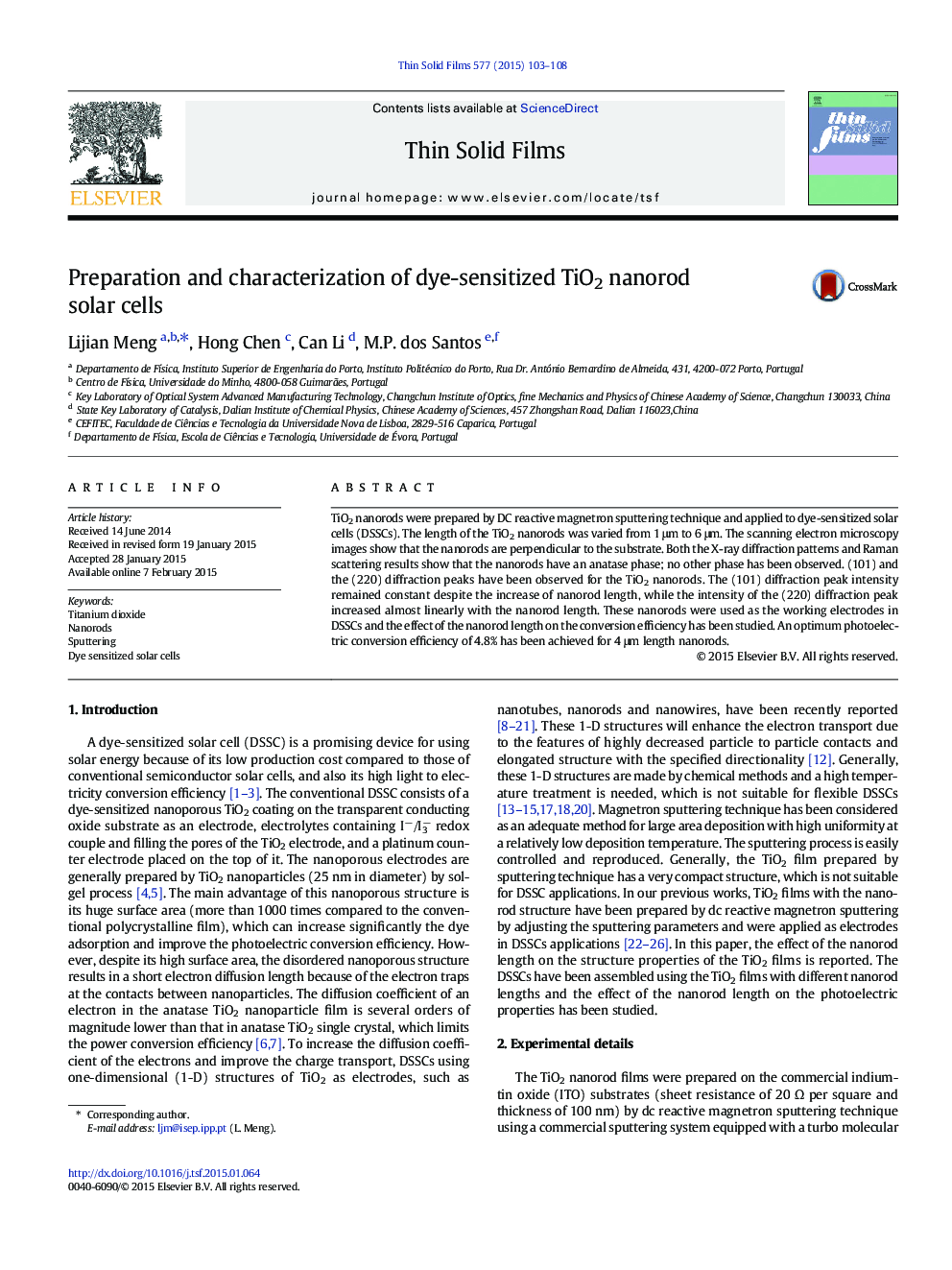| Article ID | Journal | Published Year | Pages | File Type |
|---|---|---|---|---|
| 1664900 | Thin Solid Films | 2015 | 6 Pages |
Abstract
TiO2 nanorods were prepared by DC reactive magnetron sputtering technique and applied to dye-sensitized solar cells (DSSCs). The length of the TiO2 nanorods was varied from 1 μm to 6 μm. The scanning electron microscopy images show that the nanorods are perpendicular to the substrate. Both the X-ray diffraction patterns and Raman scattering results show that the nanorods have an anatase phase; no other phase has been observed. (101) and the (220) diffraction peaks have been observed for the TiO2 nanorods. The (101) diffraction peak intensity remained constant despite the increase of nanorod length, while the intensity of the (220) diffraction peak increased almost linearly with the nanorod length. These nanorods were used as the working electrodes in DSSCs and the effect of the nanorod length on the conversion efficiency has been studied. An optimum photoelectric conversion efficiency of 4.8% has been achieved for 4 μm length nanorods.
Related Topics
Physical Sciences and Engineering
Materials Science
Nanotechnology
Authors
Lijian Meng, Hong Chen, Can Li, M.P. dos Santos,
